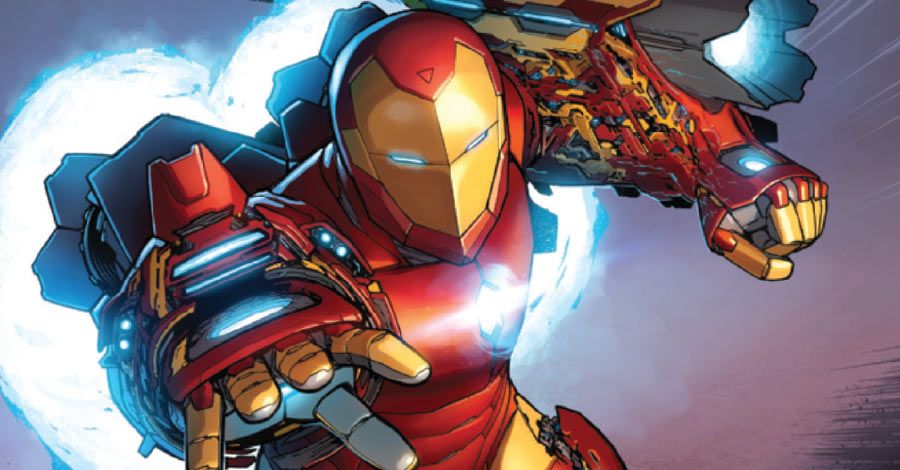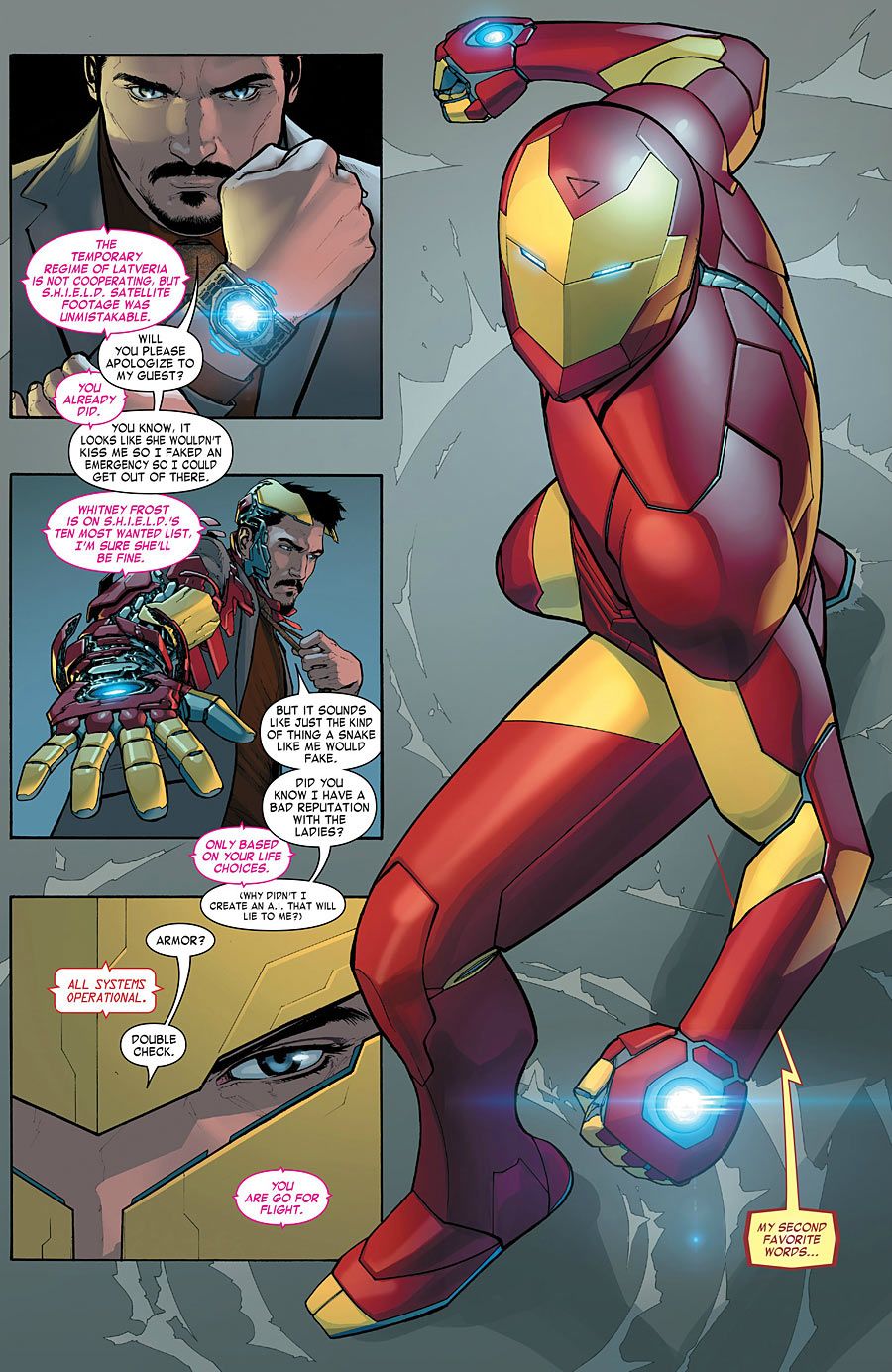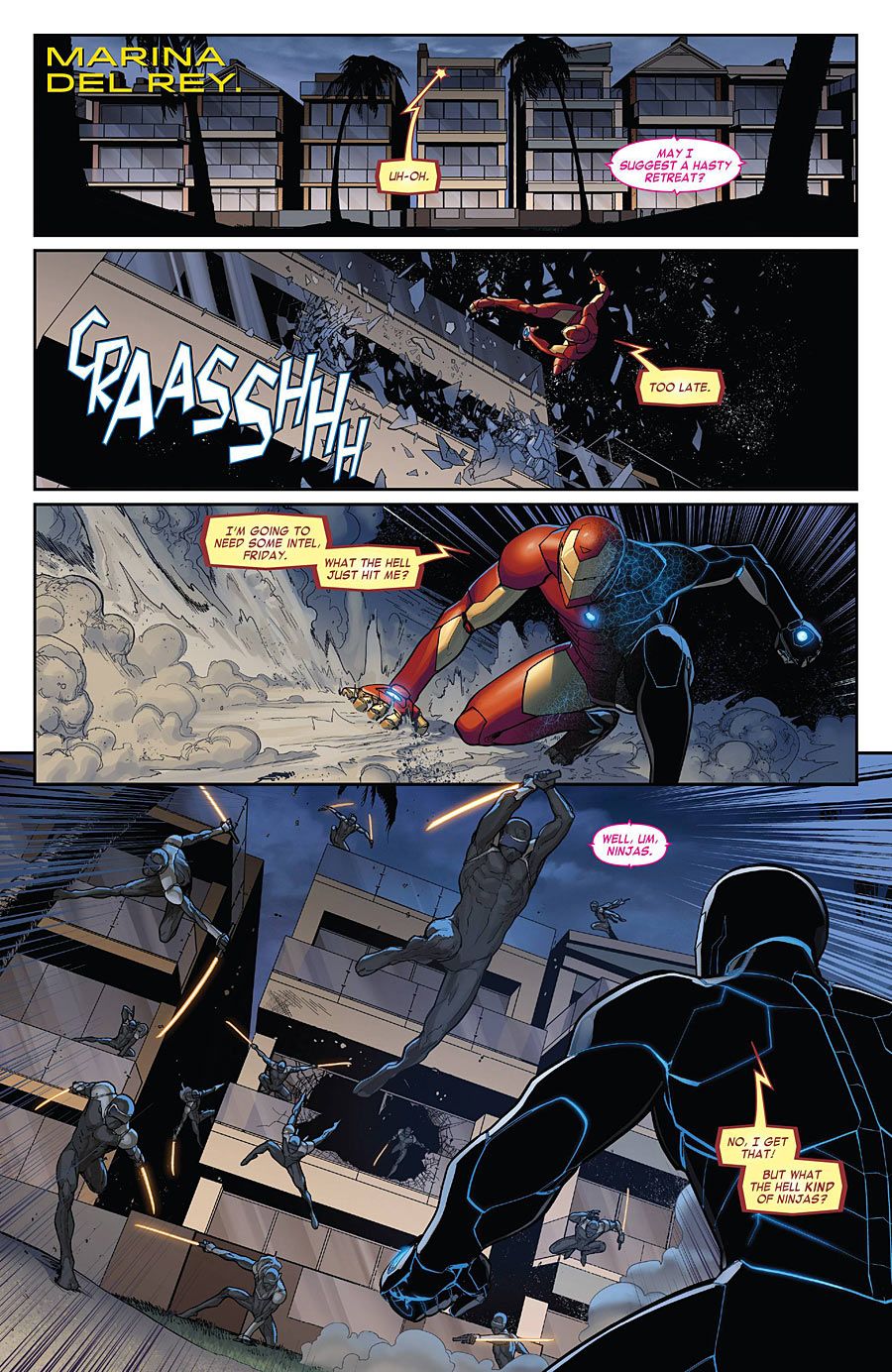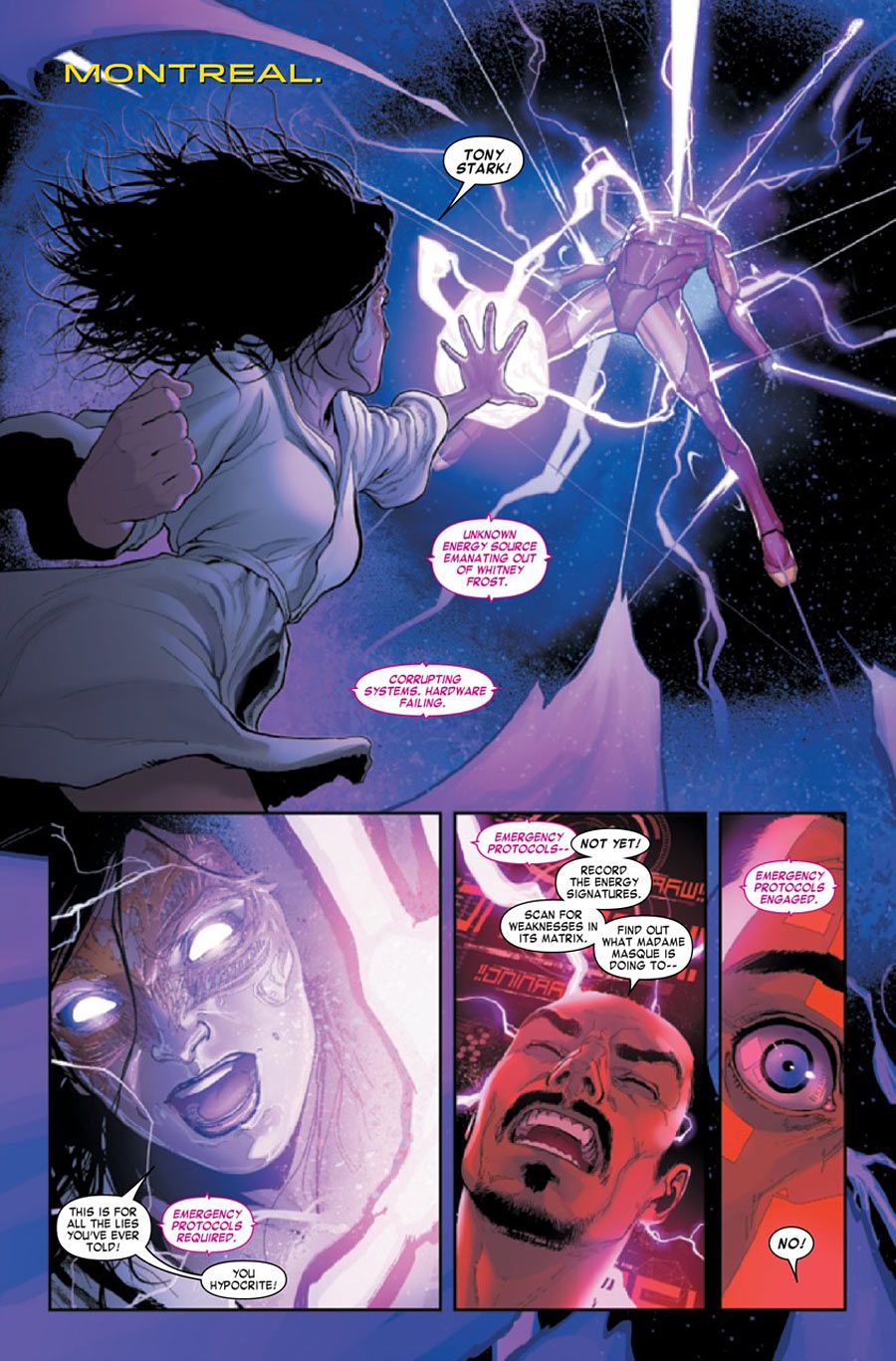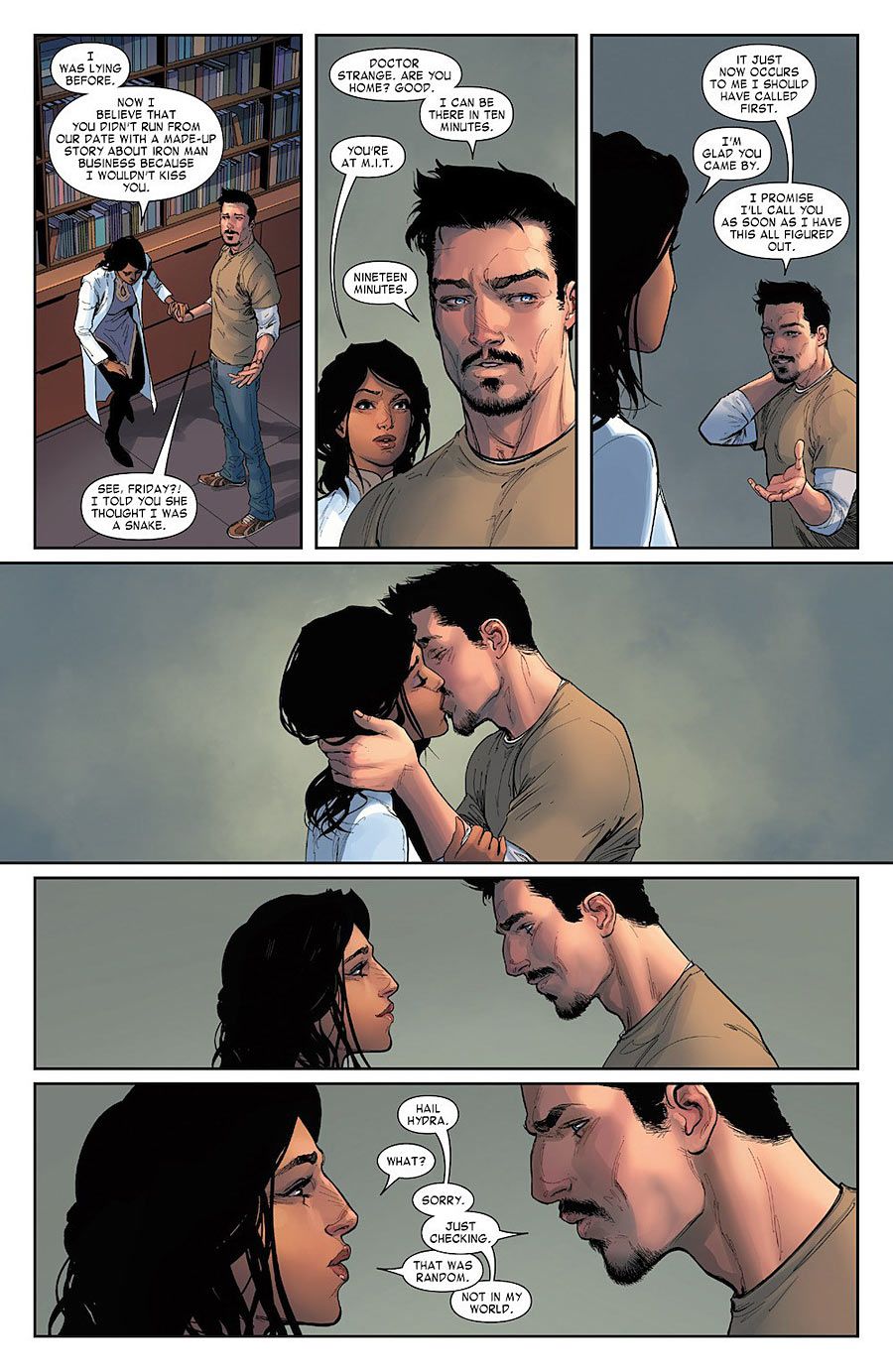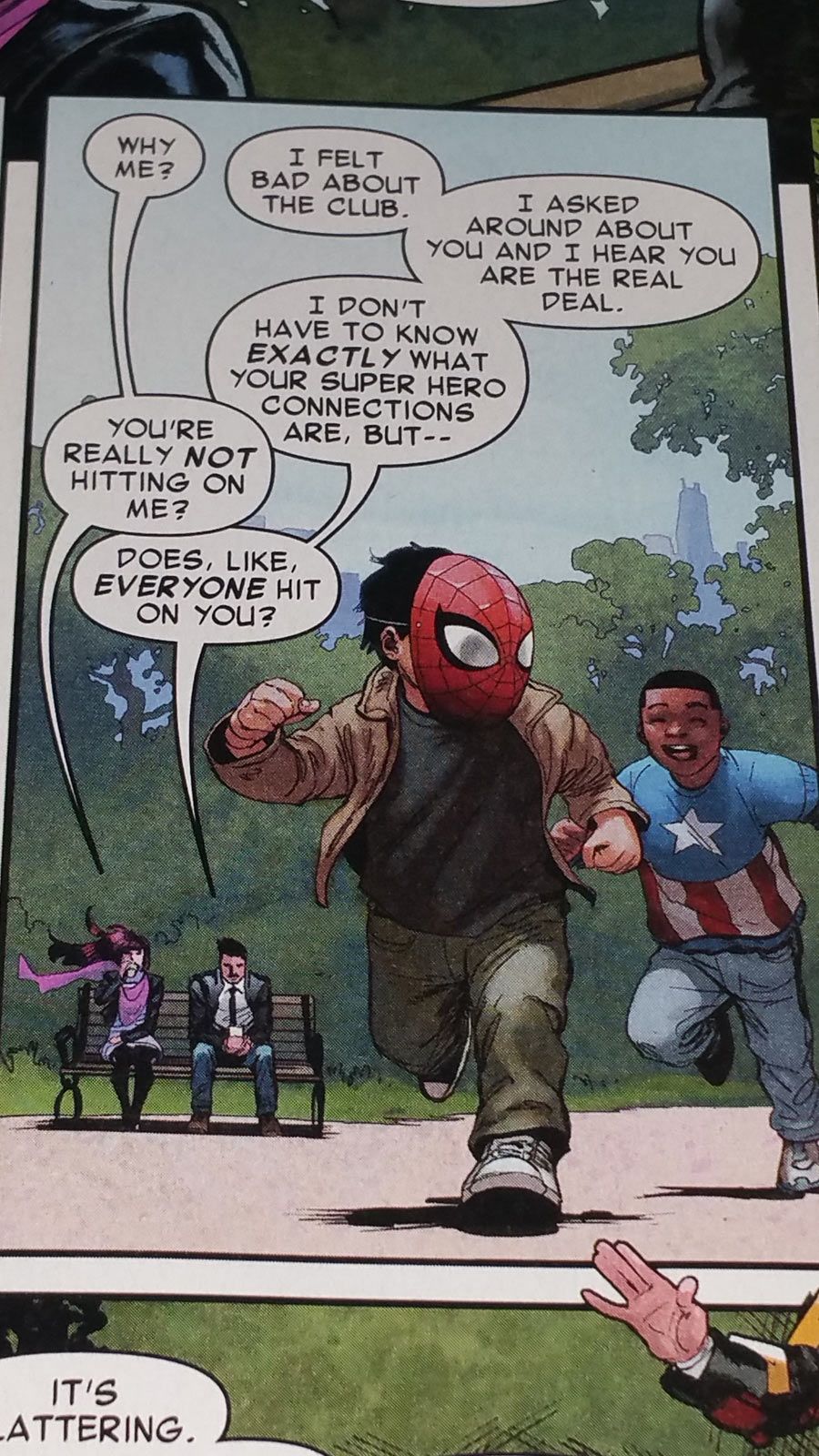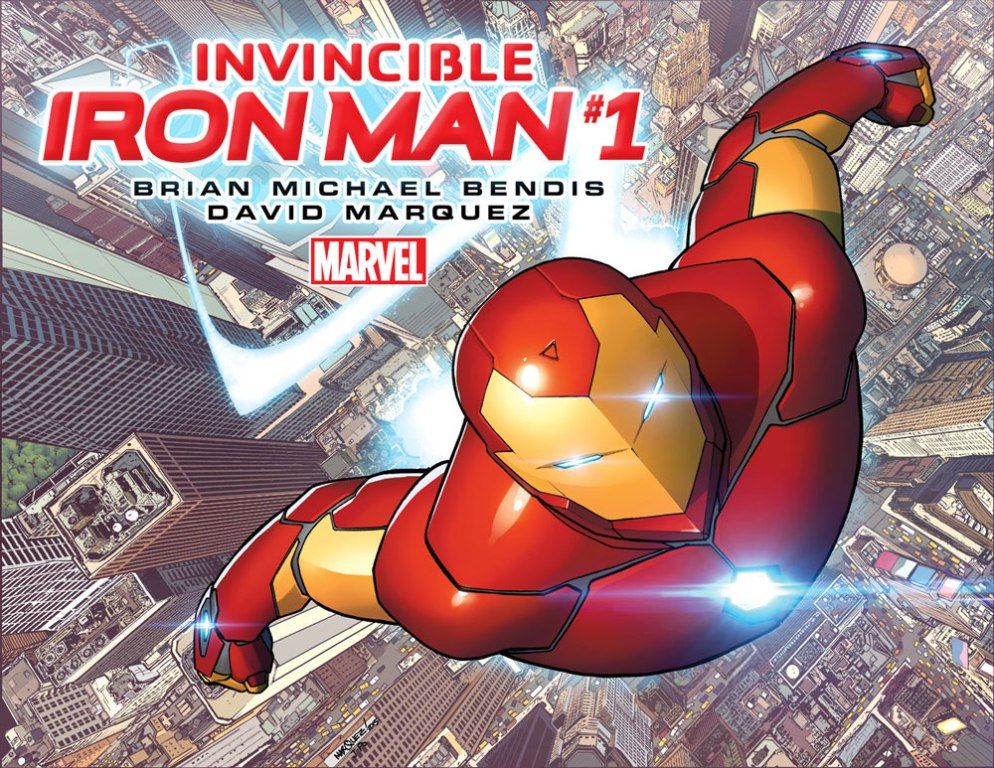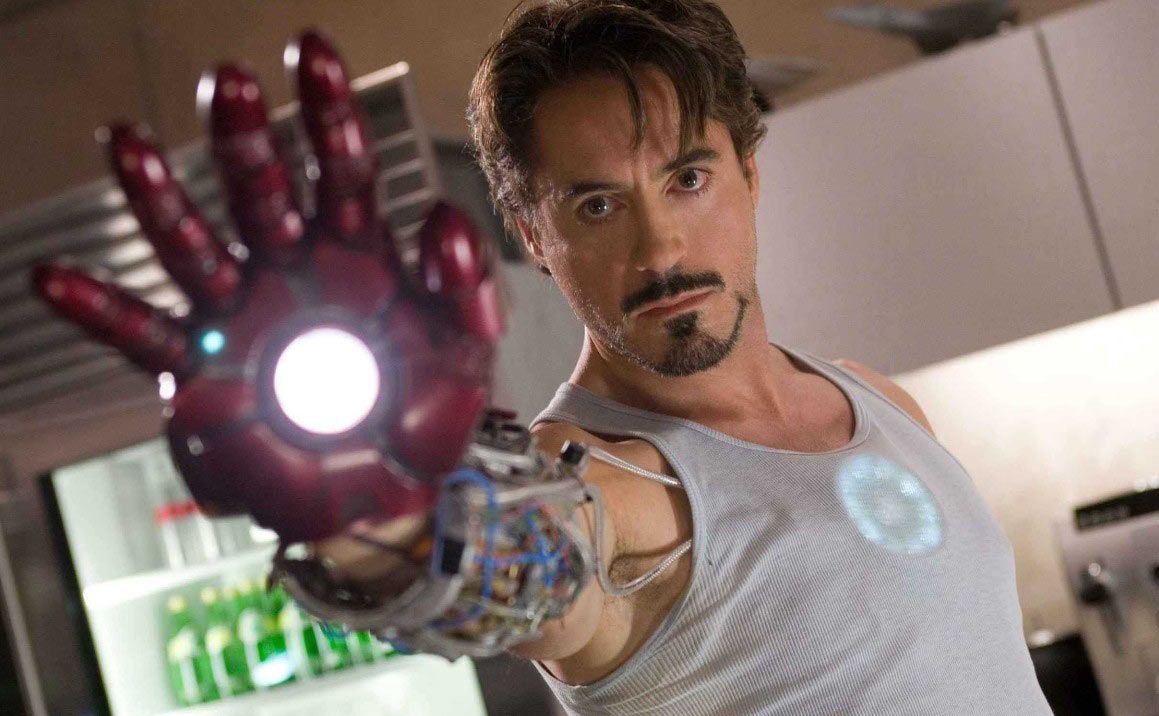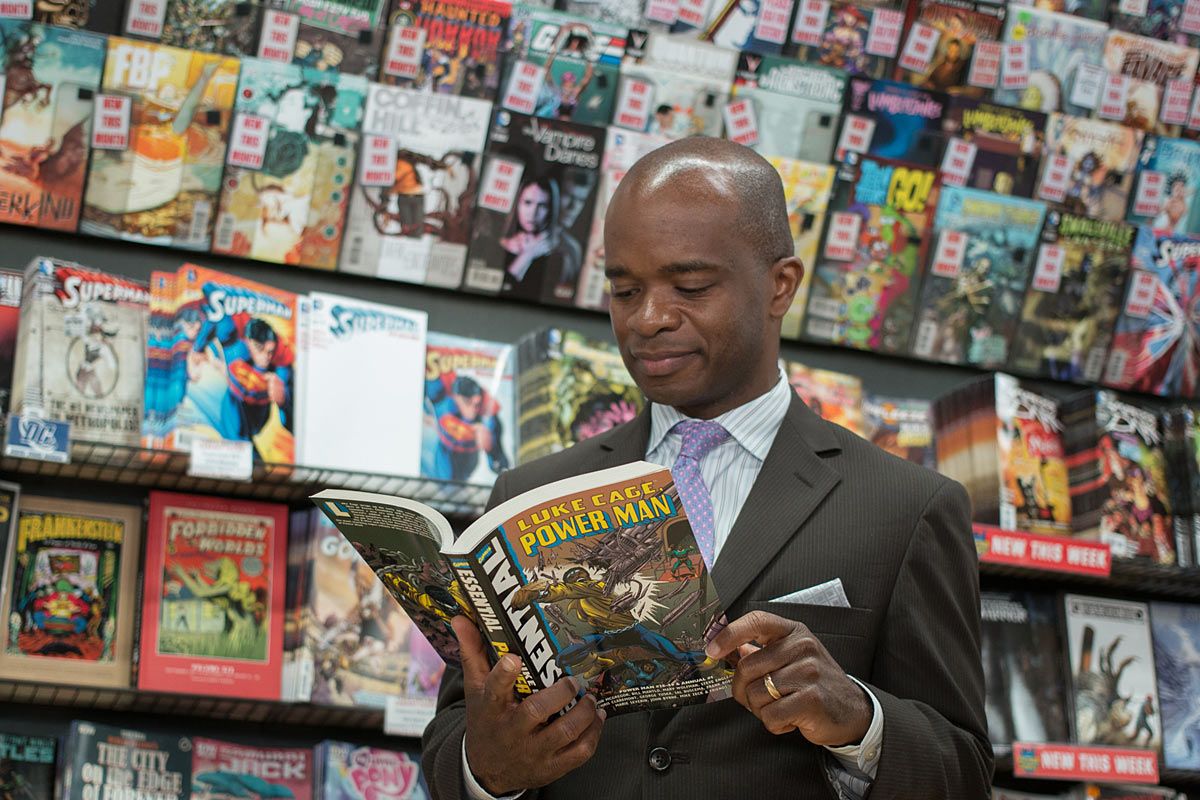How many times can a person buy a comic book of the same character with a new #1 before getting sick of it?
The answer is different for everyone.
When Marvel Comics announced their line-wide relaunch starting last October after (well, during) their "Secret Wars" event, I looked at the long list of new #1 issues, and tried to figure out which ones I would get.
"Invincible Iron Man" was one of the first titles announced, and I thought to myself "Am I going to tumble to this again?" and "Is there any way it could be better than the Warren Ellis or Matt Fraction runs?"
The preview pages looked good, with work by artist David Marquez, colorist Justin Ponsor and letterer Clayton Cowles.
The writer was Brian Michael Bendis, and that was the tipping point. I don't buy everything Bendis writes, although I love every long run I've purchased of his.
(The guy spoiled me for a numbers of writers after his stint on "Daredevil," but that's another story.)
I love his dialogue and character archaeology. I like his humor. I like the connections he reveals between any given character and the ecosystem of the larger Marvel Universe. But ultimately, I think what made me buy yet another #1 of an Iron Man comic book without feeling like a sucker was an interview I read of Bendis' at this very site, in which he said:
"So it's the entire creative team... coming to Iron Man with a very specific idea of embracing the fact that Tony Stark is probably the most well-known super hero in our world and the Marvel Universe."
I took that as an ante up, and a reflection of the publisher's apparent intent to elevate Iron Man to the same status in the comic books that he has achieved in the Marvel Cinematic Universe of films.
May 2, 2008 was the day the popular entertainment landscape started to change, because the "Iron Man" film dropped into our lives. The portrayal of well-intentioned, arrogant, heartbreaking alcoholic billionaire inventor Tony Stark by actor Robert Downey, Jr. served as the perfect nucleus for film one of phase one of Marvel Studios' film slate.
It's almost seven years later, and out of all of the characters shown in the Marvel Studios films, Downey, Jr.'s Iron Man is certainly one of the most known and loved/hated. That love/hate aspect of Tony Stark/Iron Man is one of the essential ingredients that make his character interesting, and the kind of trait Bendis is well-versed in tackling. You need only read his "Daredevil" run to get what I mean. Matt Murdock can give many people the love/hate feels, too.
Bendis wasted no time in giving the armored avenger the necessary elements for a story befitting a man of means, privilege, and lots of technology.
- New armors A new romantic interest in Amara Perera, a genius biochemical engineerAn old romantic interest in Whitney Frost, AKA Madame Masque, international crime leader/thief/murderer-now-magic-practitionerA well-known villain-turned-who-knows-what in Doctor DoomA well-known female supporting character in Mary Jane Watson from the Spider-Man mythosA quick-witted "female" artificial intelligenceExotic localesMagic
Take all of that, add some ninjas, and guest appearances by Thor and Doctor Strange, and you get a globe-spanning, fast-moving, beautiful-looking story that displays a desire to create the witty flair and style shown in the Marvel Studios films.
In terms of sales, "Invincible Iron Man" #1 was the top-selling book of October, and showed healthy sales in November. In those two months, Marvel Comics released three issues.
Sales attrition due to various factors aside, "Invincible Iron Man" hit the ground running at superhuman speed and maintained a pace among its peers and competition.
As I was approaching the final pages of the fifth and final issue of its first story arc, I found the scene with Tony Stark trying to convince a woman who's club he helped destroy to work for him was a humorous epilogue. There was something else, though, within the scene that got my attention.
The image of two children, dressed up as superheroes, running through the park. A boy of unknown ethnicity wearing a Spider-Man face mask, and a young Black male wearing a Captain America shirt.
Within the entire five-issue, 105-page, twenty-dollar story of the new "Invincible Iron Man," that panel was the moment of profundity and revelation.
Whether or not the increased profile and growing diversity of characters at Marvel Comics is going to stick or be temporary, whether or not Marvel will end up with a significantly more inclusive pool of writers, whether or not there are marketing and financial goals governing this change, that panel in "Invincible Iron Man" #5 did not have to be.
Yet, there it is. It is the image of a better world. A moment with heart.
Despite what media companies continue to spread as imagery and mythos, anybody can be Spider-Man. Despite what is happening in America today, a Black kid can wear the American flag and dare to embody the dream, in courageous defiance of the reality.
It can be so normal as to go unnoticed by the main players in the scene, yet be in the foreground of the panel.
This idea was inserted by Bendis, Marquez and Ponsor in the book being set up as one of the most popular titles in Marvel's publishing line, through which it will be embedded in the subconscious of 50,000-plus readers. That's not counting the people who purchase a digital version, or purchase it later in collected volume.
Bendis showed intent, above and beyond the collection of tools in his storytelling belt, to put forth an idea that matters. A small moment with a lot of meaning. So I'm in for a penny, in for a pound with "Invincible Iron Man."
If you can nail me like that, at the end of a quality story, and do some potential good with the opportunities afforded you, my mind and wallet are open.
Well, at least until your price point goes over $3.99.
Joseph Phillip Illidge is a public speaker on the subjects of race, comics and the corporate politics of diversity. In addition to his coverage by The New York Times, CNN Money, the BBC and Publishers Weekly, Joseph has been a speaker at John Jay College of Criminal Justice, Digital Book World's forum, Digitize Your Career: Marketing and Editing 2.0, Skidmore College, The School of Visual Arts, Purdue University, on the panel "Diversity in Comics: Race, Ethnicity, Gender and Sexual Orientation in American Comic Books" and at the Soho Gallery for Digital Art in New York City.
Joseph is the Head Writer for Verge Entertainment. Verge has developed an extensive library of intellectual properties for live-action and animated television and film, video games, graphic novels and web-based entertainment.
His graphic novel project, "The Ren," about the romance between a young musician from the South and a Harlem-born dancer in 1925, set against the backdrop of a crime war, will be published by First Second Books, a division of Macmillan.
Joseph's newest comic book project is the upcoming Scout Comics miniseries "Solarman," a revamp of a teenage superhero originally written by Stan Lee.

